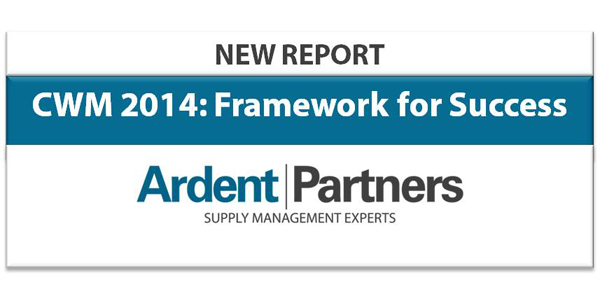[Publisher’s note: Welcome to the second part of our multi-article series on the State of Contingent Workforce Management, Ardent Partners’ landmark new research study. In this series, report author and Ardent Partners’ Research Director, Christopher J. Dwyer, will highlight key findings from his report and outline just how much this space has evolved. If you are interested, copies of the report can be found here, here, and here]
Many internal business functions are typically tied to a formal, standardized set of processes and procedures. Financial management functions such as accounts payable are standardized via a series of linked processes (i.e. the ePayables Framework), while strategic sourcing usually follows robust processes revolving around spend analytics and supplier negotiations.
The world of contingent workforce management, however, has often followed a different and much more complicated path. The State of Contingent Workforce Management research study finds that only 55% of organizations have implemented standardized, company-wide processes for managing temporary labor, a figure which cries out for some level of rigor around this truly complex category. This isn’t a new trend, either; over the years, how contract talent is managed at the average enterprise is often radically different across each company that relies on this type of labor to meet corporate objectives. There has been no set of clear boundaries or strategies that companies could leverage to build an effective contingent workforce management (CWM) program from the ground up…
…well, until now. Ardent Partners’ State of Contingent Workforce Management research study unveils a landmark concept: the Contingent Workforce Management Framework. This Framework is the perfect complement to any organization’s greater CWM strategy and offers a deep slew of insights for companies looking to develop a proper CWM program or improve their existing structure. Below is a peek at the foundation of Ardent’s CWM Framework:
- Definitions of each “category” of contemporary contingent labor, including traditional temporary labor, complex contingent labor and independent contractors.
- The necessary capabilities (programmatic, strategic, visibility, etc.) that encompass an effective CWM program.
- The goals of a greater CWM program.
- The proper performance metrics that must be tracked, monitored and measured to gauge the quality / effectiveness of the greater CWM program.
- The underlying technology solutions and platforms that automate key CWM components, link necessary processes and unify strategies.
Ardent’s Contingent Workforce Management Framework was designed with several major goals in mind: help the global marketplace understand the contemporary scope of all facets of contingent labor, offer a supporting structure in which to build rigorous and effective capabilities for managing contract talent, and assist enterprises in developing CWM programs that can not only successfully manage contingent labor now, but well into the future.
RELATED ARTICLES
Welcome to the New “State” of Contingent Workforce Management, Part I: Quality!
How Are We Doing? Five Questions to Evaluate Your CWM Program
13 for 2013: Best Practices in Contingent Workforce Management, Part 3
A Primer for Contemporary Contingent Workforce Management

